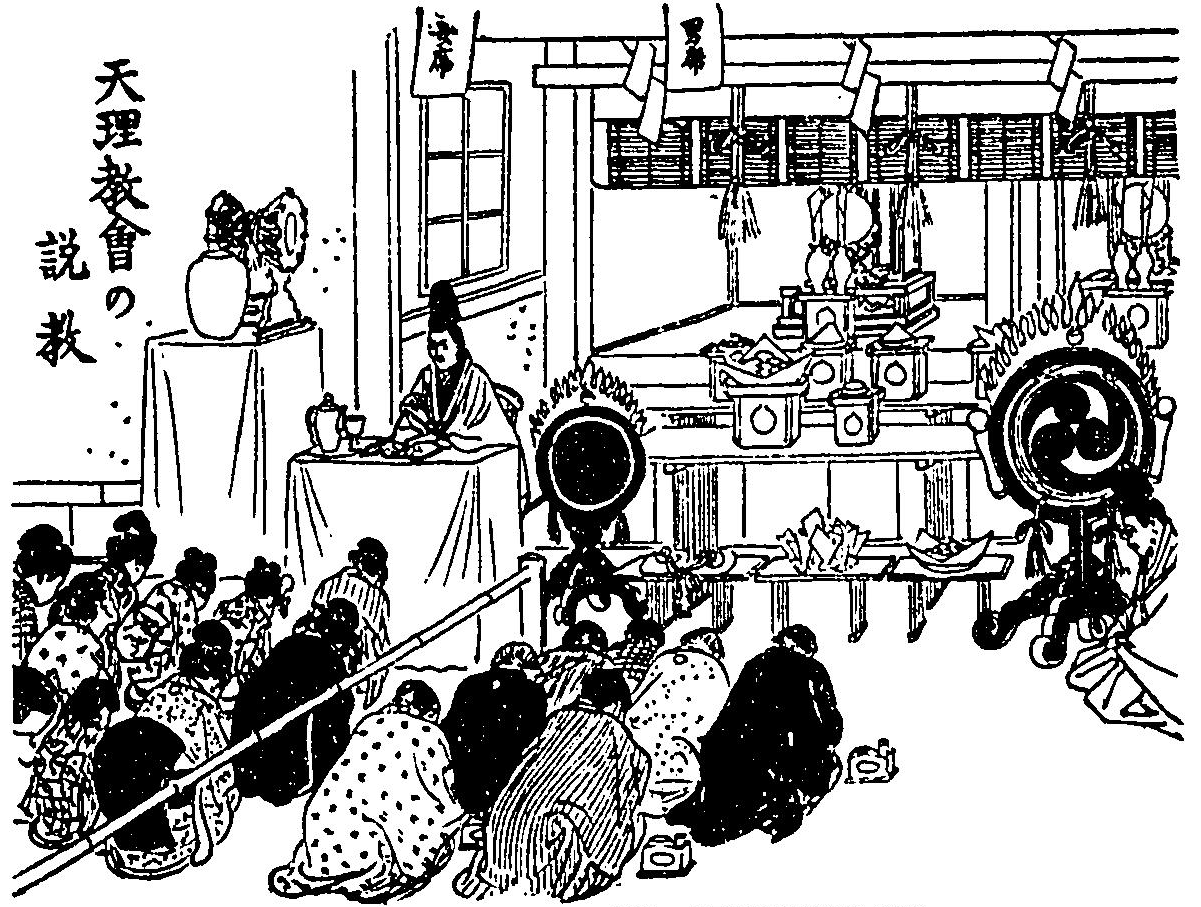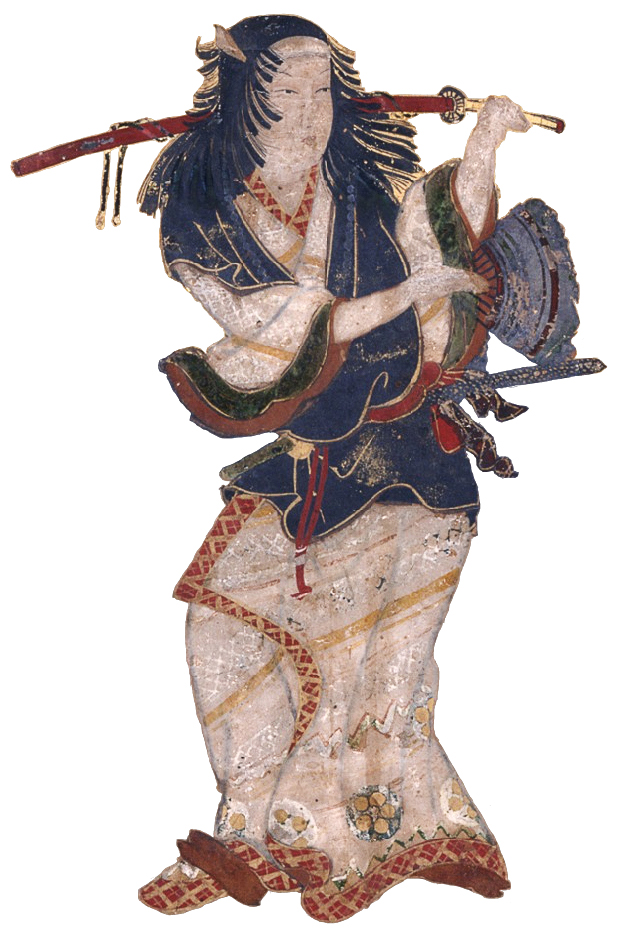|
Hyōshigi
The is a simple Japanese musical instrument, consisting of two pieces of hardwood or bamboo often connected by a thin ornamental rope. The clappers are played together or on the floor to create a cracking sound. Sometimes they are struck slowly at first, then faster and faster. Theater ''Hyōshigi'' are used in traditional Japanese theaters, such as Kabuki and Bunraku theater, to announce the beginning of a performance. The kyogen-kata usually plays the hyoshigi at the start of comedic plays. It can be used to attract the attention of the audience by conductors for theater and even athletic and juggling performances. ''Hyōshigi'' are also used to stress confusion, and other dramatic moments, in the play. Religion It is also often used to signal the starting or the end of parts of festivals, especially in the directing of the mikoshi. ''Hyōshigi'' is combined with other traditional Japanese instruments in ''mikagura-uta'', or cycle of songs, which is characteristic of the ... [...More Info...] [...Related Items...] OR: [Wikipedia] [Google] [Baidu] |
:Category:Japanese Words And Phrases ...
{{Commons Words and phrases by language Words Words Words A word is a basic element of language that carries meaning, can be used on its own, and is uninterruptible. Despite the fact that language speakers often have an intuitive grasp of what a word is, there is no consensus among linguists on its ... [...More Info...] [...Related Items...] OR: [Wikipedia] [Google] [Baidu] |
Mikoshi
A is a sacred religious palanquin (also translated as portable Shinto shrine). Shinto followers believe that it serves as the vehicle to transport a deity in Japan while moving between main shrine and temporary shrine during a festival or when moving to a new shrine. Often, the ''mikoshi'' resembles a miniature building, with pillars, walls, a roof, a veranda and a railing. Often the Japanese honorific prefix is added, making . History The first recorded use of ''mikoshi'' was during the Nara period. Among the first recorded uses was when in the year 749, the deity Hachiman is said to have been carried from Kyushu to Nara to worship the newly-constructed ''Daibutsu'' at Tōdai-ji."Usa City Tourist Navigation" Retrieved 6 June 2024 As the head shrine of all |
Japanese Musical Instruments
Traditional Japanese musical instruments, known as in Japanese, are musical instruments used in the traditional folk music of Japan. They comprise a range of string, wind, and percussion instruments. Percussion instruments *; also spelled – clapper made from wooden slats connected by a rope or cord * – Hand cymbals * – wooden or bamboo clappers * – pellet drum, used as a children's toy * – small, ornately decorated hourglass-shaped drum * – hand-held bell tree with three tiers of pellet bells * – small drum used in * – small flat gong * – a pair of sticks which are beaten together slowly and rhythmically * (also called ) – clapper made from a pair of flat wooden sticks * – woodblock carved in the shape of a fish, struck with a wooden stick; often used in Buddhist chanting * – hand drum * or () – singing bowls used by Buddhist monks in religious practice or rituals * – hourglass-shaped double-headed drum; struck only on one side * – clapper made f ... [...More Info...] [...Related Items...] OR: [Wikipedia] [Google] [Baidu] |
The Japan Times
''The Japan Times'' is Japan's largest and oldest English-language daily newspaper. It is published by , a subsidiary of News2u Holdings, Inc. It is headquartered in the in Kioicho, Chiyoda, Tokyo. History ''The Japan Times'' was launched by on 22 March 1897, with the goal of giving Japanese people an opportunity to read and discuss news and current events in English to help Japan participate in the international community. In 1906, Zumoto was asked by Japanese Resident-General of Korea Itō Hirobumi to lead the English-language newspaper '' The Seoul Press''. Zumoto closely tied the operations of the two newspapers, with subscriptions of ''The Seoul Press'' being sold in Japan by ''The Japan Times'', and vice versa for Korea. Both papers wrote critically of Korean culture and civilization, and advocated for Japan's colonial control over the peninsula in order to civilize the Koreans. The newspaper was independent of government control, but from 1931 onward, the pa ... [...More Info...] [...Related Items...] OR: [Wikipedia] [Google] [Baidu] |
Kamishibai
is a form of Japanese street theater and storytelling that was popular during the Great Depression of the 1930s and the postwar period in Japan until the advent of television during the mid-20th century. were performed by a (" narrator") who travelled to street corners with sets of illustrated boards that they placed in a miniature stage-like device and narrated the story by changing each image. has its earliest origins in Japanese Buddhist temples, where Buddhist monks from the 8th century onward used ("picture scrolls") as pictorial aids for recounting their history of the monasteries, an early combination of picture and text to convey a story. History Origins The exact origins of during the 20th century are unknown, appearing "like the wind on a street corner" in the Shitamachi section of Tokyo around 1930. It is believed, however, that has deep roots in Japan's ("pictorial storytelling") art history, which can be traced back to the 12th-century scrolls, such as ... [...More Info...] [...Related Items...] OR: [Wikipedia] [Google] [Baidu] |
Religion
Religion is a range of social system, social-cultural systems, including designated religious behaviour, behaviors and practices, morals, beliefs, worldviews, religious text, texts, sanctified places, prophecies, ethics in religion, ethics, or religious organization, organizations, that generally relate humanity to supernatural, transcendence (religion), transcendental, and spirituality, spiritual elements—although there is no scholarly consensus over what precisely constitutes a religion. It is an essentially contested concept. Different religions may or may not contain various elements ranging from the divine, sacredness, faith,Tillich, P. (1957) ''Dynamics of faith''. Harper Perennial; (p. 1). and a supernatural being or beings. The origin of religious belief is an open question, with possible explanations including awareness of individual death, a sense of community, and dreams. Religions have sacred histories, narratives, and mythologies, preserved in oral traditions, sac ... [...More Info...] [...Related Items...] OR: [Wikipedia] [Google] [Baidu] |
Tenrikyo
is a Japanese new religion which is neither strictly monotheistic nor pantheistic, originating from the teachings of a 19th-century woman named Nakayama Miki, known to her followers as "Oyasama". Followers of Tenrikyo believe that God of Origin, God in Truth, known by several names including "Tsukihi," " Tenri-Ō-no-Mikoto" and "Oyagamisama" revealed divine intent through Miki Nakayama as the Shrine of God and to a lesser extent the roles of the Honseki Izo Iburi and other leaders. Tenrikyo's worldly aim is to teach and promote the Joyous Life, which is cultivated through acts of charity and mindfulness called . The primary operations of Tenrikyo today are located at Tenrikyo Church Headquarters, which supports 16,833 locally managed churches in Japan,Japanese Ministry of Education. ''Shuukyou Nenkan, Heisei 14-nen'' (宗教年鑑平成14年). 2002. the construction and maintenance of the and various community-focused organisations. It has 1.75 million followers in Japan a ... [...More Info...] [...Related Items...] OR: [Wikipedia] [Google] [Baidu] |
Bunraku
is a form of traditional Japanese puppet theatre, founded in Osaka in the beginning of the 17th century, which is still performed in the modern day. Three kinds of performers take part in a performance: the or (puppeteers), the (chanters), and musicians. Occasionally other instruments such as drums will be used. The combination of chanting and playing is called and the Japanese word for puppet (or dolls, generally) is . It is used in many plays. History 's history goes as far back as the 16th century, but the origins of its modern form can be traced to around the 1680s. It rose to popularity after the playwright Chikamatsu Monzaemon (1653–1724) began a collaboration with the chanter Takemoto Gidayu (1651–1714), who established the Takemoto puppet theater in Osaka in 1684. Originally, the term referred only to the particular theater established in 1805 in Osaka, which was named the after the puppeteering ensemble of , an early 18th-century puppeteer from Awaji ... [...More Info...] [...Related Items...] OR: [Wikipedia] [Google] [Baidu] |
Kabuki
is a classical form of Theatre of Japan, Japanese theatre, mixing dramatic performance with Japanese traditional dance, traditional dance. Kabuki theatre is known for its heavily stylised performances, its glamorous, highly decorated costumes, and for the elaborate make-up worn by some of its performers. Kabuki is thought to have originated in the early Edo period, when the art's founder, Izumo no Okuni, formed a female dance troupe that performed dances and light sketches in Kyoto. The art form later developed into its present all-male theatrical form after women were banned from performing in kabuki theatre in 1629. Kabuki developed throughout the late 17th century and reached its zenith in the mid-18th century. In 2005, kabuki theatre was proclaimed by UNESCO as an intangible heritage possessing outstanding universal value. In 2008, it was inscribed in the UNESCO Intangible Cultural Heritage Lists, UNESCO Representative List of the Intangible Cultural Heritage of Humanity ... [...More Info...] [...Related Items...] OR: [Wikipedia] [Google] [Baidu] |






